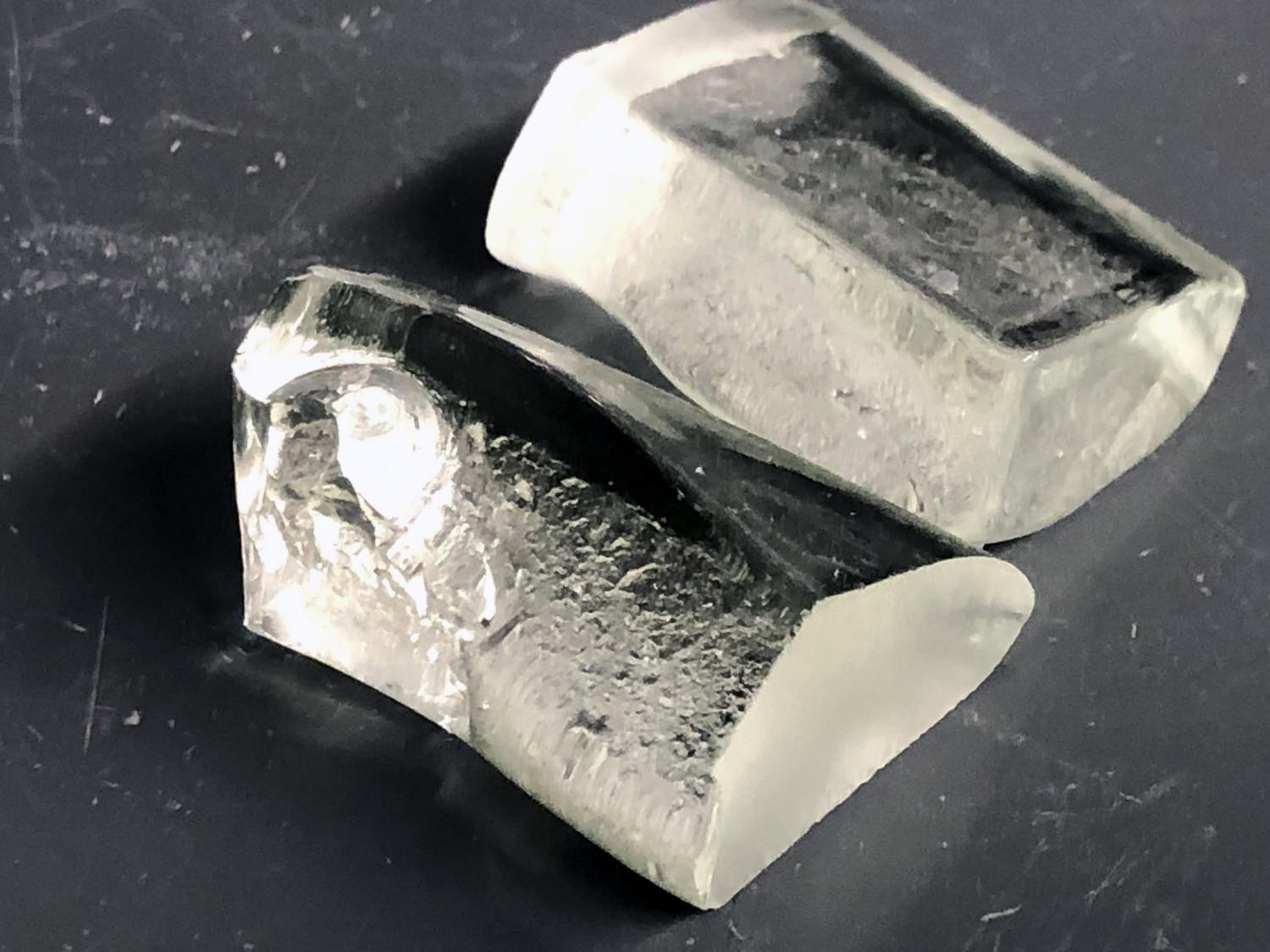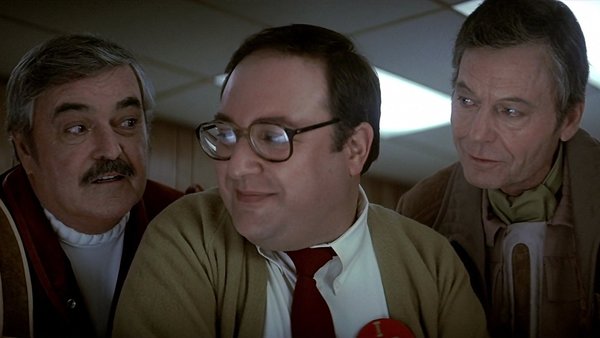
Posted on 08/15/2023 11:38:02 AM PDT by Red Badger

A sample of LionGlass, a new type of glass engineered by researchers at Penn State that requires significantly less energy to produce and is much more damage resistant than standard soda lime silicate glass. Credit: Adrienne Berard/Penn State
Globally, glass manufacturing emits at least 86 million tons of carbon dioxide annually. However, a new type of glass called LionGlass, developed by Penn State researchers, offers the potential to reduce this carbon output by 50%. Not only does this innovative glass demand considerably less energy for production, but it also boasts greater resistance to damage compared to conventional soda lime silicate glass. The scientists behind this breakthrough have recently submitted a patent application, marking the initial move towards introducing LionGlass to the market.
“Our goal is to make glass manufacturing sustainable for the long term,” said John Mauro, Dorothy Pate Enright Professor of Materials Science and Engineering at Penn State and lead researcher on the project. “LionGlass eliminates the use of carbon-containing batch materials and significantly lowers the melting temperature of glass.”
Soda lime silicate glass, the common glass used in everyday items from windows to glass tableware, is made by melting three primary materials: quartz sand, soda ash, and limestone. Soda ash is sodium carbonate and limestone is calcium carbonate, both of which release carbon dioxide (CO2), a heat-trapping greenhouse gas, as they are melted.
“During the glass melting process, the carbonates decompose into oxides and produce carbon dioxide, which gets released into the atmosphere,” Mauro said.
But the bulk of the CO2 emissions come from the energy required to heat furnaces to the high temperatures needed for melting glass. With LionGlass, the melting temperatures are lowered by about 300 to 400 degrees Celsius, Mauro explained, which leads to a roughly 30% reduction in energy consumption compared to conventional soda lime glass.
Not only is LionGlass easier on the environment, but it’s also much stronger than conventional glass. The researchers said they were surprised to find that the new glass, named after Penn State’s Nittany Lion mascot, possesses significantly higher crack resistance compared to conventional glass.
Some of the team’s glass compositions had such a strong crack resistance that the glass would not crack, even under a one kilogram-force load from a Vickers diamond indenter. LionGlass is at least 10 times as crack-resistant compared to standard soda lime glass, which forms cracks under a load of about 0.1 kilograms force. The researchers explained that the limits of LionGlass have not yet been found, because they reached the maximum load allowed by the indentation equipment.
“We kept increasing the weight on LionGlass until we reached the maximum load the equipment will allow,” said Nick Clark, a postdoctoral fellow in Mauro’s lab. “It simply wouldn’t crack.” Mauro explained that crack resistance is one of the most important qualities to test for in glass because it is how the material eventually fails. Over time, glass develops microcracks along the surface, which become weak points. When a piece of glass breaks, it’s due to weaknesses caused by existing microcracks. Glass that is resistant to forming microcracks in the first place is especially valuable, he added.
“Damage resistance is a particularly important property for glass,” Mauro said. “Think about all the ways we rely on the strength of glass, in the automotive industry and electronics industry, architecture, and communication technology like fiber optic cables. Even in health care, vaccines are stored in strong, chemically resistant glass packaging.”
Mauro is hoping that the improved strength of LionGlass means the products created from it can be lighter weight. Since LionGlass is 10 times more damage resistant than current glass, it could be significantly thinner.
“We should be able to reduce the thickness and still get the same level of damage resistance,” Mauro said. “If we have a lighter-weight product, that is even better for the environment, because we use less raw materials and need less energy to produce it. Even downstream, for transportation, that reduces the energy required to transport the glass, so it’s a winning situation for everyone.”
Mauro notes that the research team is still evaluating the potential of LionGlass. They have filed a patent application for the entire family of glass, which means there are many compositions within the LionGlass family, each with its own distinct properties and potential applications. They are now in the process of exposing various compositions of LionGlass to an array of chemical environments to study how it reacts. The results will help the team develop a better understanding of how LionGlass can be used throughout the world.
“Humans learned how to manufacture glass more than 5,000 years ago and since then it has been critical to bringing modern civilization to where it is today,” Mauro said. “Now, we are at a point in time when we need it to help shape the future, as we face global challenges such as environmental issues, renewable energy, energy efficiency, health care, and urban development. Glass can play a vital role in solving these issues, and we are ready to contribute.”
Tech Ping!.....................
The starve the plants of CO2 campaign continues
Ok, but is it made from real lion?

Not surprising, MatSci and GeoSci are top notch at Penn State. It was PSU GeoSci that discovered the Marcellus Shale.
There used to be a working nuclear reactor on campus when I was there. No big deal. We just assumed kids smarter than us were looking after it.
The word Green = Scam
One would think another Pennsylvania company would be highly interested in this, namely Pittsburgh Paint & Glass.
PSU Chemical Engineering (said to be the hardest major there) is another department that I would guess would be involved.
> Ok, but is it made from real lion? <
I think you’re on to something here. But don’t say anything until the material is in stores. Then contact a lawyer, and sue them for false advertising.
And if it’s actually made from lions, sue them for animal abuse.
It’s the American way.
Notice that there was NO MENTION of the cost of this glass. They made a big deal of strength 10x, and lower melting point less energy needed but COST never mentioned.
My bet 10-20x more expensive. GREEN is never cheap.
I hate green glasses but yellow is even worse except at night. Give me extra dark smoke colored glass and maybe a mirror coating but sum times they sunburn my. nose.
LOL!
I like glass that is 10x more durable. That is completely awesome. I would even be willing to pay a bit more for it.
But I could give two craps if it decreases CO2 emissons. Complete and utter BS.
I’m sure it is. Is that the sort of thing they’d be lion about?
One thing not mentioned in the article is how transparent LionGlass is, or isn’t.
Kind of the point of most uses for glass is that it be transparent...
So not good for riot fires?…
The article mentions this LionGlass requires 300-400 degrees less heat to melt - so in a fire, it will liquify faster ...
Well, they mentioned that the increased strength could allow them to make a much thinner product w/ the same durability as regular glass - which would lower shipping rates, etc.
“...possesses significantly higher crack resistance”
Maybe they can provide some to the First Son.
HA! My first thought as well.
Disclaimer: Opinions posted on Free Republic are those of the individual posters and do not necessarily represent the opinion of Free Republic or its management. All materials posted herein are protected by copyright law and the exemption for fair use of copyrighted works.